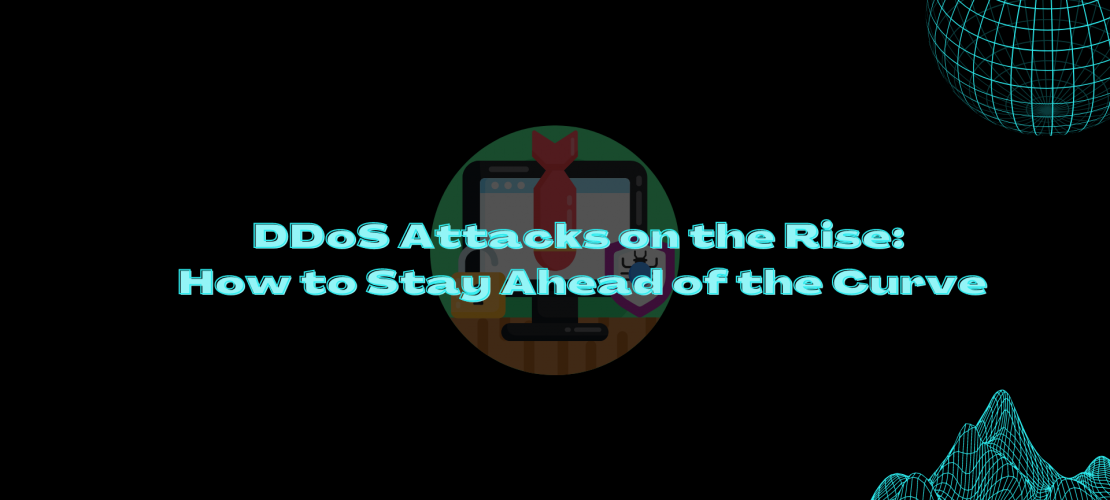Distributed denial-of-service (DDoS) attacks are a persistent threat to organizations of all sizes and industries. In recent years, DDoS attacks have become more sophisticated and frequent, targeting a wide range of organizations, including financial institutions, healthcare providers, e-commerce businesses, and government agencies. In this blog post, we’ll explore the latest trends in DDoS attacks and provide practical tips for staying ahead of the curve.
The Rise of DDoS Attacks
According to a recent report by Neustar, DDoS attacks increased by 154% in the first half of 2021 compared to the same period in 2020. This trend is concerning because DDoS attacks can cause significant disruption and damage to organizations. In addition to causing downtime, DDoS attacks can also be used as a smokescreen to distract IT staff while attackers gain access to sensitive data or systems.
DDoS attacks are becoming more sophisticated as attackers leverage new techniques and tools. One trend is the use of multi-vector attacks, which combine multiple attack methods, such as UDP floods, TCP SYN floods, and HTTP floods, to overwhelm targeted systems. Another trend is the use of IoT botnets, which are networks of compromised IoT devices that can be controlled by attackers to launch DDoS attacks.
How to Stay Ahead of the Curve
As DDoS attacks continue to evolve, organizations must take steps to protect themselves. Here are some practical tips for staying ahead of the curve:
- Implement DDoS Protection Solutions
One of the most effective ways to protect against DDoS attacks is to implement DDoS protection solutions. These solutions can help organizations detect and mitigate attacks in real-time, reducing the impact of an attack. There are several types of DDoS protection solutions, including on-premises appliances, cloud-based services, and hybrid solutions.
- Monitor for Anomalies
Organizations should monitor their networks and systems for anomalies that may indicate a DDoS attack is underway. These anomalies can include spikes in traffic, unusual patterns of traffic, and changes in the types of traffic being received. By monitoring for these anomalies, organizations can take proactive steps to mitigate attacks before they cause damage.
- Implement Scalable Architectures
Organizations should design their networks and systems with scalability in mind. This can help them handle sudden spikes in traffic during a DDoS attack. Scalable architectures can include load balancers, distributed databases, and elastic computing resources that can be quickly scaled up or down as needed.
- Use Automation
Automation can be a powerful tool for responding to DDoS attacks quickly and efficiently. Organizations can use automation to detect and mitigate attacks in real-time, reducing the impact of an attack. Automation can also help organizations respond more quickly to incidents, reducing downtime and minimizing the risk of data loss.
- Train Employees on DDoS Defense
Employee training is a critical component of DDoS defense. Organizations should train their employees on how to recognize and respond to DDoS attacks. This can include educating employees on how to monitor for anomalies, how to report suspicious activity, and how to follow incident response protocols.
- Conduct Regular Testing
Regular testing is essential for ensuring that DDoS protection solutions are working as intended. Organizations should conduct regular penetration testing and vulnerability assessments to identify and address weaknesses in their defenses. Regular testing can also help organizations refine their incident response plans and procedures.
Conclusion
DDoS attacks are a persistent threat that organizations must take seriously. As DDoS attacks become more sophisticated and frequent, organizations must take steps to protect themselves. DDoS attacks are on the rise, and organizations must take steps to protect themselves. Implementing DDoS protection solutions, monitoring for anomalies, using scalable architectures, using automation, training employees, and conducting regular testing are all essential components of a comprehensive DDoS defense strategy. By staying ahead of the curve and being prepared for the worst, organizations can minimize the impact of DDoS attacks and keep their systems and data secure.




